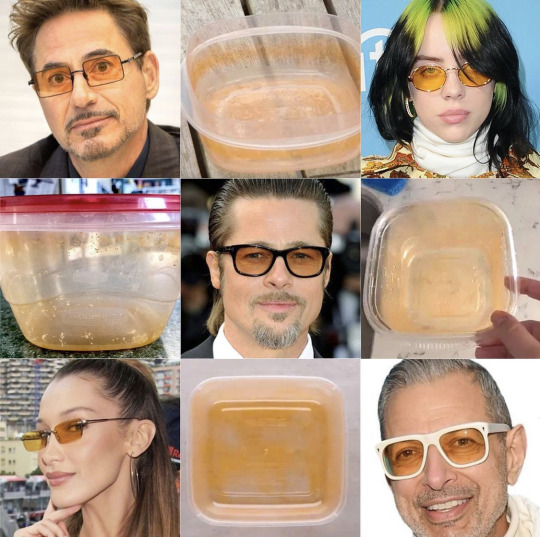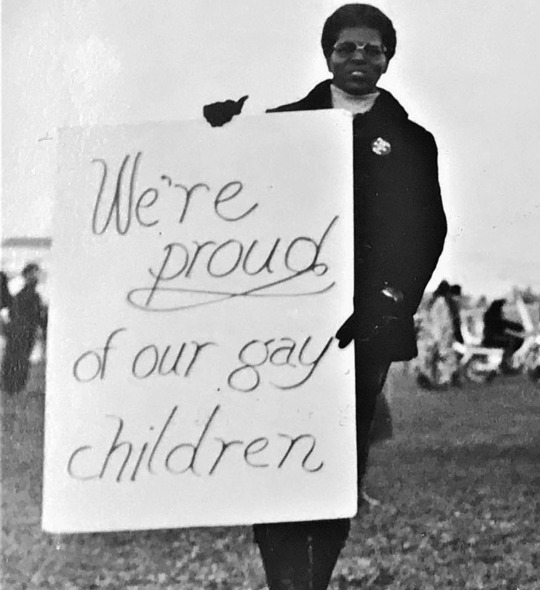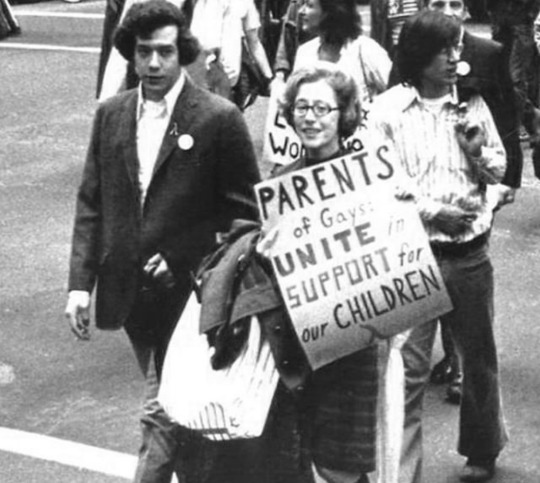Text
boys: jacking off
girls: jilling off
non binary : ferching a pail of water
33K notes
·
View notes
Text



I’ve been playing with makeup lately and I love it.
21 notes
·
View notes
Text
6K notes
·
View notes
Text
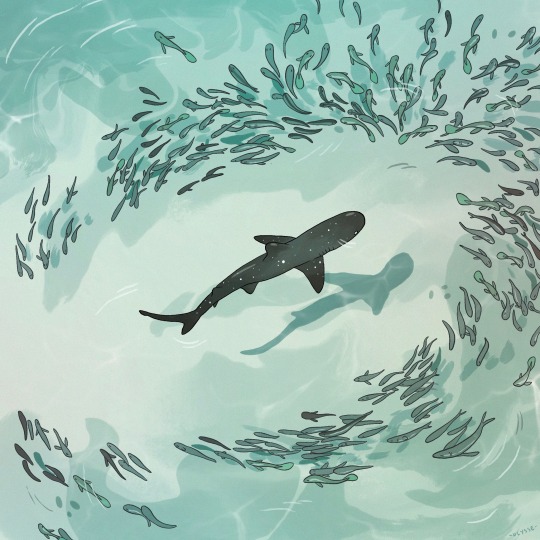
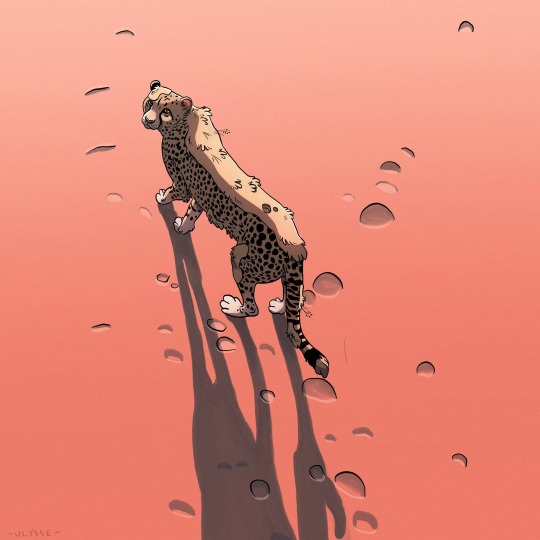
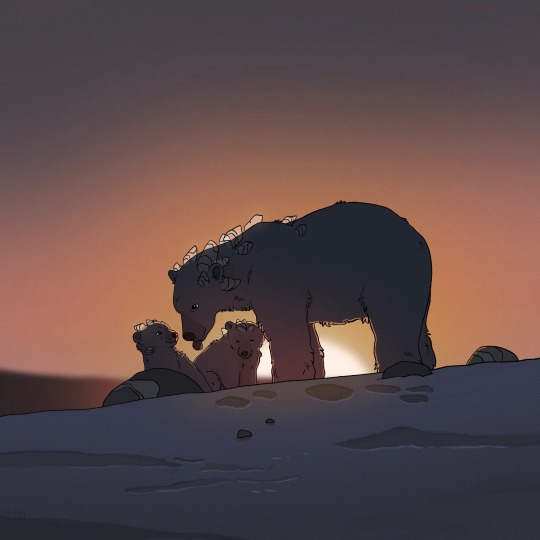

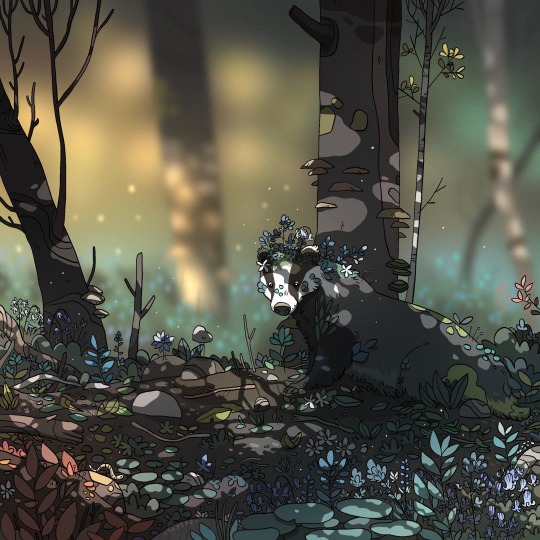

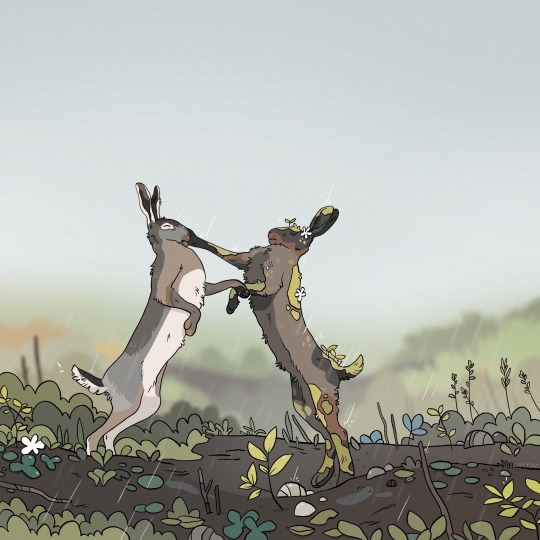


Want some bestiary?
(Yeah, it's been a long time, I know, I know...)
33K notes
·
View notes
Text
I’m sorry I’m losing it over this painting

124K notes
·
View notes
Text
HIV/AIDS Awareness & Activism Masterpost
As a lesbian who is passionate about LGBT history (and science), and who did her dissertation partly on HIV, here is a masterpost of HIV/AIDS activism history ahead of HIV Vaccine Awareness Day on the 18th of May.
If you are gay, lesbian or bi, or transgender, you need to read this and know this. This is your history.
What is HIV/AIDS?
They are two distinct conditions. HIV stands for Human Immunodeficiency Virus and is the precursor to AIDS, which is Acquired Immune Deficiency Syndrome.
You cannot have AIDS without contracting the virus (HIV) first. HIV is the virus - this is what you “catch”, in other words - that progresses as the virus proliferates inside the human host, which leads to opportunistic infections that make up AIDS. The S in AIDS, Syndrome, indicates that there is not just one potential disease, but rather a collection of diseases that can develop as the host’s immunity system is progressively weakened. HIV paves the way for other diseases to take over. People receive an AIDS diagnosis when their CD4 cell count drops below 200 cells/mm, or if they develop certain opportunistic infections. It is usually, but not always, these opportunistic infections that become the cause of death for untreated patients. Not everyone who has AIDS develops the same opportunistic infections; they can get just one, or a combination of many infections. Infections and illnesses that come under the AIDS umbrella include:
- Kaposi’s sarcoma: a type of cancer that frequently occurs in HIV+ people. It causes the characteristic red, itchy lesions that are commonly associated with AIDS. If someone told you to picture a symptom of AIDS, it would probably be this. It is often referred to as an AIDS-defining illness. Lesions can cause skin breakdown, fever and lymphoedema.
- Burkitt’s lymphoma: a cancer of the lymphatic system which results in tumour growth. Can lead to death if untreated. Common treatments for all variants (including the immunodeficient variant), is chemotherapy, immunotherapy and surgery where possible.
- Pneumocystis pneumonia (PCP): a disease rarely found in healthy people. AIDS patients make up to 40% of PCP cases (the other 60% come from other immunocompromised patients such as people with cancer). Causes a progressive dry cough, fatigue, muscle weakness and can lead to organ damage, particularly of the liver and spleen. Sometimes patients with PCP become so ill they need to be intubated (where a tube is placed into the airway to allow for mechanical ventilation because patients are unable to breathe for themselves).
- Cachexia (sometimes known as HIV Wasting Syndrome): a syndrome that is associated with progressive illness, it describes unintentional weight loss (of more than 10% of the patient’s initial body weight). Nutritional supplementation can help to slow muscle wasting but is not always effective. This is another AIDS-defining illness - think of the pictures of skeletal AIDS patients in hospital. (Don’t know what I’m talking about? Scroll to the bottom of the post for some archival footage of AIDS patients).
- Esophageal candidiasis: an infection of the oesophagus that causes difficulty swallowing which can be very painful. It is often accompanied by thrush (white, raised lumps or spots) in the throat. It can further compound problems for patients with cachexia, as E. candidasis can lead to more unintentional weight loss.
- Cytomegalovirus: a virus that occurs in patients who have been untreated for a long period. It causes retinopathy (damage to the retina) and is irreversible. It can cause permanent blindness. Occurs in 15-40% of AIDS patients.
(NB: These are only a few infections that come under the AIDS umbrella - there are many, many more. All the bullet points contain hyperlinks to their sources, click to learn more.)
Since AIDS is a collection of diseases and not just one, AIDS cannot be passed from one person to the next. HIV however, can be transmitted from one person to another which can then progress to AIDS in the other person.
Where did HIV come from?
HIV was first documented in America in 1960, but its existence only became more well-known in the early 1980s, when doctors noticed trends of PCP and Kaposi’s sarcoma occurring in gay men in New York, L.A. and San Francisco. HIV was first found in the UK in 1981.
HIV is thought to have originated from chimpanzees in Central Africa as early as the 1800s. If we think about it this way, HIV can be considered as a zoonotic disease. A zoonotic disease is one that originates in non-human animals but is then transferred to the human population, either by animal populations and humans residing too closely with one another or by way of genetic mutation (interestingly, COVID-19 is another example of a zoonotic disease). Zoonotic diseases can sometimes cause no harm to the animals they come from but can go on to cause disease in humans. There is some uncertainty as to why HIV emerged in chimpanzees to begin with - it may have been passed on to chimps from another animal or it could be the result of genetic mutation and viral evolution, or even viral dormancy. The literature just isn’t there to have a definite answer, probably because science and scientific method just wasn’t what it is now when HIV first appeared.
But however it came about, HIV/ AIDS would go on to become one of the biggest threats to the gay population in the twentieth century (and unfortunately, still is today). HIV/AIDS killed over eight million people worldwide by the early 1990s (albeit not all of them gay). It is hard to get exact figures for how many AIDS patients were homosexual; many who were closeted chose not to disclose their orientation and would instead give other reasons for their HIV+ status (such as intravenous drug use or heterosexual unprotected sex). But, to give an example, in this 1997 study at one urban hospital in Canada, 95% of HIV/AIDS deaths were attributed to gay or bisexual men.
Although HIV/AIDS occurred worldwide during this period (and continues to occur today), the HIV crisis or HIV epidemic was specific to America. The terms are often used to refer to events in the UK too, although the UK’s epidemic was much more concentrated (though it was not any less serious). “The crisis” as it is colloquially known spans the period between 1981-1997 and was characterised by widespread HIV transmission among the gay and bisexual male population, particularly concentrated in urban areas and major cities. This urbanisation of the disease was well known, and was fictionally demonstrated in the British docu-drama series It’s A Sin, in which gay man Ritchie is spurned by a potential lover on the Isle of Wight because he is a “London Boy” whom, it is assumed, is at greater risk of carrying the virus because he lives in the city.
How is HIV transmitted?
HIV transmission occurs can only happen if a HIV negative person comes into direct contact with certain bodily fluids that are contaminated with HIV from an infected person. The fluids of the uninfected and infected person have to physically mix in order for transmission to occur.
This can happen through unprotected sex with a HIV+ person (both homosexual and heterosexual), needle sharing by intravenous drug users, through breastfeeding if the nursing mother is infected, and via the placenta in pregnant women if the expectant mother is already infected. It is worth nothing that, with treatment, not all bodily fluids can transmit the HIV virus. Saliva, tears and sweat can not transmit the virus if they are not already mixed with infected blood. If a HIV+ person is receiving continuous, consistent treatment (usually by taking anti-retro viral therapy drugs), they are referred to as having a viral load that is undetectable. This means that the presence of the virus in their body is so low it cannot be passed on to anyone else. Research has shown that even unprotected sex with someone with an undetectable viral load will not cause transmission of HIV.
What was the government’s response?
- Ronald Reagan was president from 1981 and 1989. During the first four years of the crisis, President Ronald Reagan never said a word about the disease. He chose to largely ignore the problem, and his administration was heavily criticised for refusing to allocate more funding for AIDS research later on into his Presidency, despite pleas from doctors at the CDC. This video goes some way to unveil the casual homophobia Reagan exhibited in press interviews when he was repeatedly asked about AIDS. A close confidant of Reagan, North Carolina Senator Jesse Helms, once referred to gay people as “weak, morally sick wretches.” In 1993 he attempted to block the appointment of out lesbian Roberta Achtenberg to government “because she’s a damn lesbian", adding “she’s not your garden-variety lesbian. She’s a militant-activist-mean lesbian”. In 1991, activists responded to Helms’ opposition to the People With AIDS community (PWA) by condoming his house. Activists engulfed his entire house in a 15 foot giant condom. “A CONDOM TO PREVENT UNSAFE POLITICS. HELMS IS DEADLIER THAN A VIRUS” was printed on the inflatable. The event was captured live on TV.
- George Bush Sr. was vice-president to Reagan throughout Reagan’s presidency (1981-89). Bush was president for only one term, from 1989 to 1993. His response was largely the same as his predecessors, with some critics calling his reaction to the AIDS crisis “mixed at best or calculated indifference at worst”. Urvashi Vaid led the National Gay and Lesbian Task Force from 1989 to 1992 said this about Bush in a 2018 interview: “He did not use his voice or office as president or, for that matter, as vice president, to address what was happening to tens of thousands of Americans.” During Bush’s term in office, 70,000 people died of AIDS.
Social stigma and the gay response
Due to the nature of HIV transmission, HIV/AIDS was not considered dangerous by the general (heterosexual) public. Because it proliferated amongst “undesirable” social groups like homosexuals, the homeless, sex workers and drug users, there was little incentive for the rest of society to care. There were many politicians like Jesse Helms (see above) who thought that “the dirty homosexuals deserved what they were getting” (paraphrased, but you get the idea). Among the medical community at the time, AIDS was considered a “gay disease” - it was incorrectly concluded that heterosexuals were not at risk of contracting HIV (this assumption was only corrected much later on, when it was proved that heterosexuals were in fact getting HIV). HIV/AIDS was even referred to by healthcare professionals as “the gay cancer”.
As a result, there was much resistance to the early AIDS campaigners and there was little support for the gay community. The National Institute of Health was accused by activists of under-funding and under-producing research on the disease. Through tireless lobbying of government and health organisations in the United States, the gay community made themselves known.They demanded drug research and better healthcare, and to achieve that they led hundreds and hundreds of protests for the better part of two decades. They protested outside of government buildings (even the White House), occupied churches to prevent homophobic sermons taking place, and led “kiss-ins”, protests where gay people would kiss openly in public. Activists often used their own bodies to protest - people would lie in the street, blocking roads and access to state properties. They would be forcibly removed by the police and in many cases, beaten and arrested despite peacefully protesting.
By 1995, a number of drugs were discovered and tested in clinical trials. They showed promise, and many in the gay community felt a sense of victory that they had finally found an effective treatment. However, there was also a profound sense of loss at the time and many grieved the hundreds of thousands they had already lost to AIDS. This feeling is demonstrated in David France’s documentary How To Survive a Plague. In one scene, France is taping a demonstration where people are holding urns with the ashes of people who have died from AIDS. He interviews one young man carrying an urn, who says:
“I think this [the demonstration] is moving, it’s like making something beautiful out of the epidemic and I felt like showing there is nothing beautiful about this. This is what I’m left with. A box full of ashes and bone chips, you know, there’s no beauty in that and I felt like a statement like this saying, look at this, this is what [George] Bush has done. This is what him and Reagan have done. Our loved ones, this is what they’ve been reduced to. We’re bringing them to the [people] responsible for their death.”
The crowd behind him begins to chant - Bring[ing] the dead to your door! We won’t take it anymore!”
There is another young man who opens the urn he is carrying and throws the ashes of his partner into the street: “I love you, Mike! I love you Mike!”
Who were the major players in HIV/AIDS activism?
- Peter Staley: the founder of the Treatment Action Group and AIDSmeds.com. He was diagnosed with AIDS-Related Complex in 1985 and became quickly involved in activism. A quote from Peter in the documentary How To Survive a Plague (dir. David France): “To be threatened with extinction and to not lay down, to instead stand up and fight back. The way we did it, the way we took care of ourselves and each other, the goodness that we showed, the humanity that we showed the world is just incredible. To lose that many good people, you know, like any war you wonder why you came home.”
- Bob Rafsky: the chief spokesperson of ACT UP who only came out as gay at the age of 40 in 1985; he divorced his wife but they remained amicable and he continued to co-parent his daughter Sara whilst taking a more active role in the gay community and AIDS campaigning. He contracted HIV in 1987 and died in 1991 at the age of 47. A quote from Rob in France’s documentary: “The names of the people who will save our lives are not Bill Clinton or Jerry Brown. The people who might save our lives are Iris Long, Mark Harrington, Peter Staley et cetera. And they are the ones who will be remembered as the heroes of this epidemic as well as those who were born before.”
- Larry Kramer: the playwright who was well-known for his written work as well as his activism for the gay community. He co-founded the Gay Men’s Health Crisis, a non-profit that still supports people living with AIDS today. He went on to found the AIDS Coalition to Unleash Power (ACT UP) in 1987. He is quoted as saying “every single drug that’s out there is because of ACT Up. No one else got us the drugs. We - ACT UP)- got those drugs out there. It is the proudest achievement of the gay population of this world will ever claim.” He managed to avoid contracting HIV and lived long enough to see the legalisation of same sex marriage. He married his husband David Webster in 2013. They had been together since 1991; Kramer died in 2020, less than a month short of his 85th birthday.
- Mark Lowe Fisher was an ACT UP activist who died of AIDS complications on 29th October 1992. He is quoted as saying “I want my [own] funeral to be fierce and defiant.” ACT UP protesters distributed flyers after his death that read ‘Join us as we indict George Bush with Murder. Political funeral Monday 2nd November, 3:00pm’. The funeral was video taped by David France. This footage later featured in his documentary. A procession to George Bush’s re-election headquarters followed the service at Judson Memorial Church. Bob Rafsky, the spokesperson of ACT UP, gave this speech on the street outside Bush’s offices: “This isn’t a political funeral for Mark, it is [a political funeral] for the man who killed him and so many others and is slowly killing me. George Bush, we believe you will lose because there is still some justice left in the universe and some compassion left in the American people. We put this curse on you, Mark’s spirit will haunt you so that in the moment of your defeat, you will remember our defeat. And that in the moment of your death, you will remember our death. As for Mark, when the living can no longer speak, the dead may speak for them. Mark’s voice is here with us. Let the whole Earth hear us now, we beg, we cry, we demand that this epidemic end. Not just so that we may live, but so that Mark’s soul may rest in peace at last. In anger and in grief, this fight is not over until all of us are safe.”
- Iris Long: a heterosexual housewife and chemist, Long earned her PhD in organic chemistry in 1972 and despite having no connection to people with AIDS, she volunteered to support the Community Research Initiative. Initially there to distribute experimental drugs to those in need, she later became a prominent supporter of ACT UP, teaching members about infectious disease and human biology. The knowledge she shared with the community was instrumental in their success; their proposals demanding that the FDA (Food and Drug Administration) run clinical trials for numerous drugs would not have progressed without her know-how.
Lesbian involvement in AIDS activism
Lesbians were heavily involved in AIDS activism from the beginning. HIV/AIDS did not decimate the lesbian population as it did the gay male population, but both lesbians and gay men rallied together for their community during the AIDS crisis. Female-female HIV transmission is rare; although we aren’t sure exactly why, it is likely to be a combination of factors, including the differing ways male-male sex occurs to female-female sex. Lesbian sex can involve a lower risk of exchanging bodily fluids (because vaginal fluids are not always produced in the quantities that semen is), and because if saliva is exchanged through intercourse it does not carry as much of a risk as other body fluids. Despite the lesser risk, there were undoubtedly some lesbians who were infected with HIV, but their transmission would’ve likely come about by other means, such as intravenous drug use, homelessness, or survival sex.
Take a look at just some of the ways lesbians were integral to the fight against AIDS…
Fire eating lesbians: A history of arson as violence against the gay and lesbian community
Women, AIDS and Activism fighting invisibility
The lesbian ‘blood sisters’ who cared for gay men when doctors were too scared to
Treatments and the future of HIV
HIV is no longer a death sentence thanks to the tireless work of the AIDS activists you have just read about, who brought about the drugs and treatment regimens we have today. However, it is still a major issue in the LGBT community and there is still a major stigma attached to a HIV/AIDS diagnosis.
It is important to not get complacent of the risks this disease still poses to our community. Initiatives like safer sex campaigns and needle exchange programmes (that were also won for us by the activists) go some way to minimise the transmission of HIV/AIDS, but there is still more to be done to eradicate this disease completely. HIV Vaccine Awareness Day (May 18th) is led by the National Institute of Allergy and Infectious Disease (NIAID) and is “a chance to thank the volunteers, community members, health professionals, and scientists working together to find a safe and effective preventive HIV vaccine. It is also a time to educate communities about the importance of preventive HIV vaccine research”.
Where can I learn more?
Documentaries. There are literally dozens and dozens of free documentaries available right now on YouTube. Some good ones to start with are:
- How To Survive a Plague dir. David France (x)
- Life Before the Lifeboat: San Francisco’s Courageous Response to AIDS (x)
- The Age of AIDS (x)
- A Time of Change: Confronting AIDS (x)
If books are more your thing:
- David France, director of How To Survive a Plague has a book of the same name to accompany the documentary.
- And the Band Played On: Politics, People, and the AIDS epidemic by Randy Shilts (1987).
- AIDS and It’s Metaphors by Susan Sontag (1989).
- Close to the Knives: A Memoir of Disintegration by David Wojnarowicz (1991).
Advocacy groups and links:
- Terrence Higgins Trust (UK only), established after the death of Terry Higgins in 1982. He was one of the first people to die of AIDS in the United Kingdom and has become famous posthumously thanks to the awareness efforts of this charity set up in his name.
- National AIDS Trust (UK only), one of the mainstream organisations in the UK with links and information on symptoms, transmission, prevention and its own advocacy network.
- For the science and worldwide data archives on HIV/AIDS, see the relevant pages from the World Health Organisation.
- The Elton John AIDS Foundation funds international front line treatment efforts and campaigns to end HIV stigma.
- The International AIDS Society is a global network and the world’s largest association of HIV professionals, known for its scientific rigour and Research for Prevention conferences.
HIV research is ongoing. Take a look…
Are people with HIV more susceptible to COVID-19?
The four-decade quest for an HIV vaccine yields new hope
234 notes
·
View notes
Text
140K notes
·
View notes



